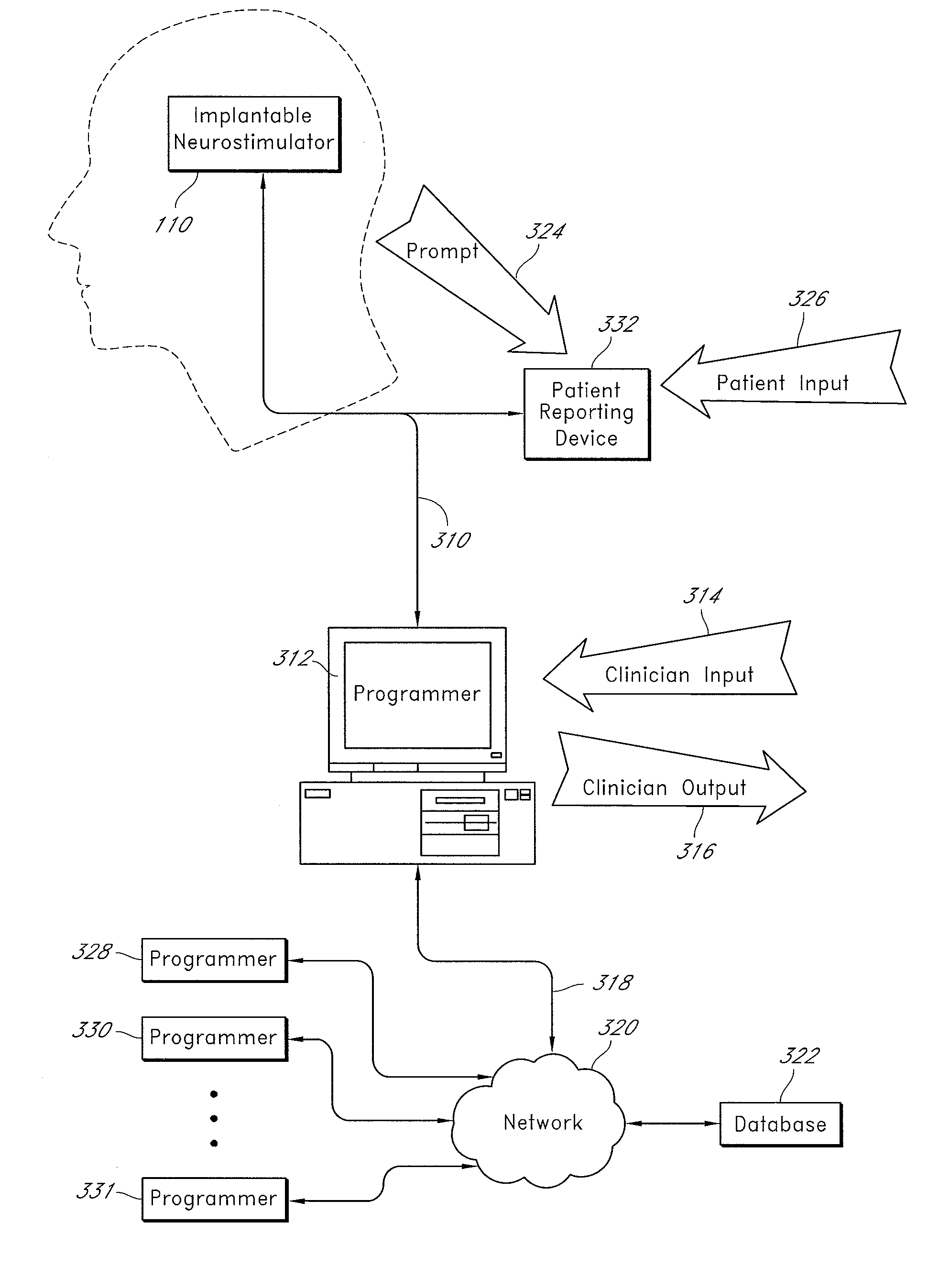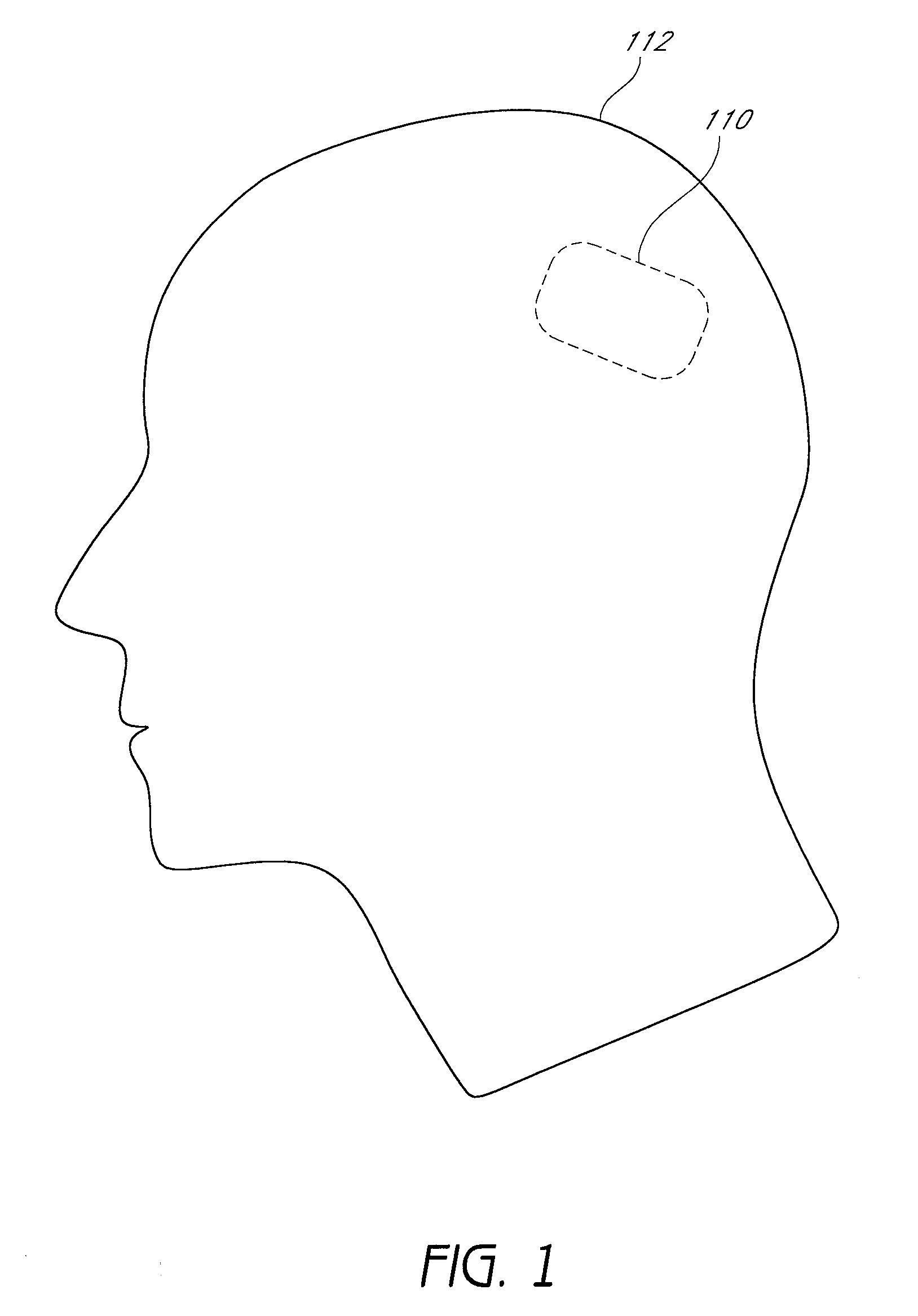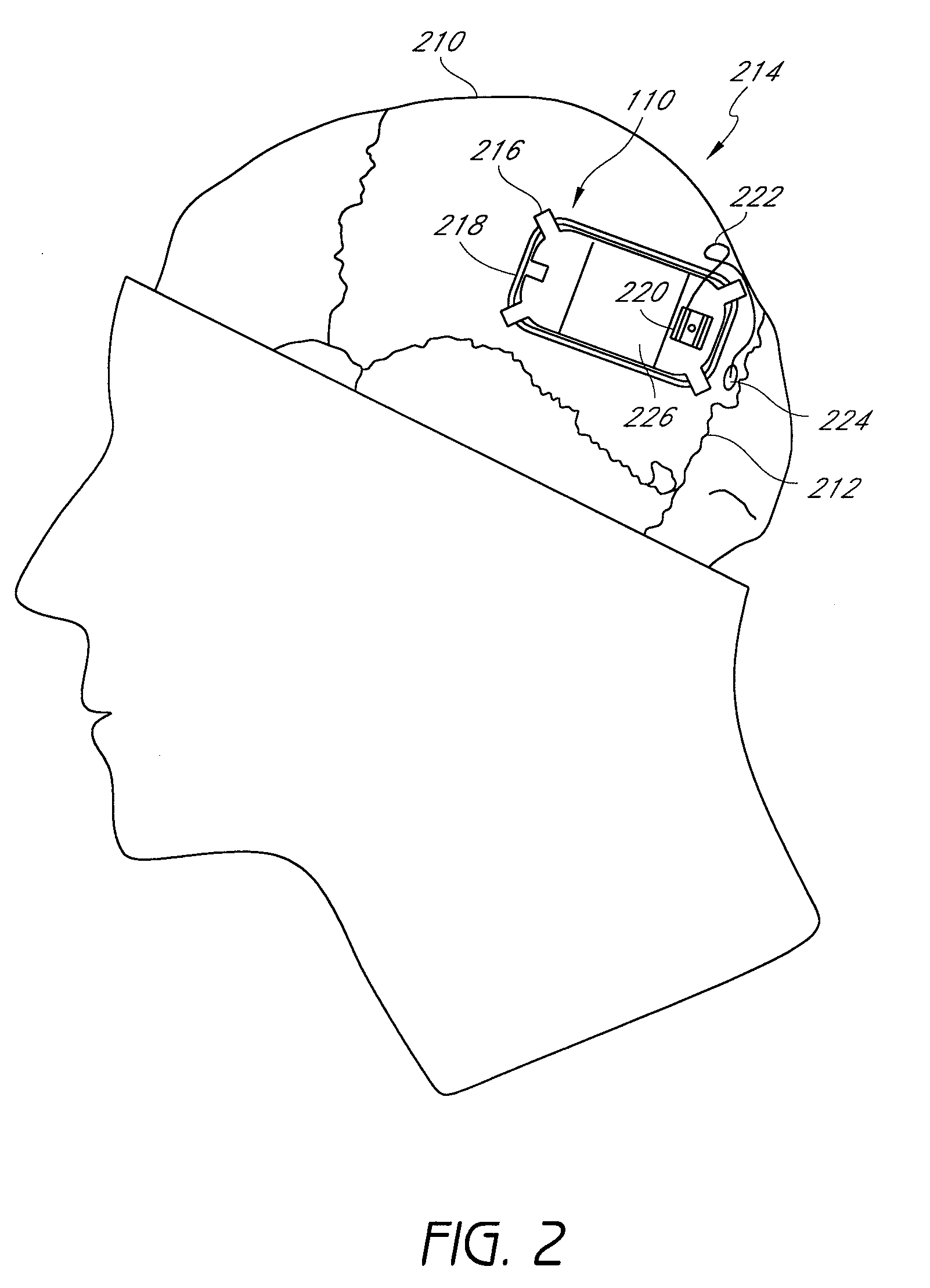Auto adjusting system for brain tissue stimulator
a brain tissue and auto-adjusting technology, applied in the field of auto-adjusting systems for brain tissue stimulators, can solve the problems of physical impairment, deterioration of other brain functions (including cognitive function), frequent limitation of sufferers, etc., and achieve the effect of enhancing the tuning process
- Summary
- Abstract
- Description
- Claims
- Application Information
AI Technical Summary
Problems solved by technology
Method used
Image
Examples
Embodiment Construction
[0055]The inventions are described below with reference to detailed illustrative embodiments. It is apparent that systems according to the inventions can be embodied in a wide variety of forms. Consequently, the specific structural and functional details disclosed herein are representative and do not limit the scope of the inventions. Further, the embodiments disclosed herein are described in the context of an implantable device having a small, self-contained, responsive neurostimulator for providing a course of therapy to a patient because the embodiments disclosed herein have particular utility in this context. However, the embodiments herein can also be applied to other implantable medical devices such as a drug delivery device, an insulin pump or any other implantable medical device capable of providing therapy to a patient, as well as other medical devices.
[0056]FIG. 1 depicts an embodiment of an intracranially implanted device 110 comprising a small, self-contained, responsive...
PUM
 Login to View More
Login to View More Abstract
Description
Claims
Application Information
 Login to View More
Login to View More - R&D
- Intellectual Property
- Life Sciences
- Materials
- Tech Scout
- Unparalleled Data Quality
- Higher Quality Content
- 60% Fewer Hallucinations
Browse by: Latest US Patents, China's latest patents, Technical Efficacy Thesaurus, Application Domain, Technology Topic, Popular Technical Reports.
© 2025 PatSnap. All rights reserved.Legal|Privacy policy|Modern Slavery Act Transparency Statement|Sitemap|About US| Contact US: help@patsnap.com



